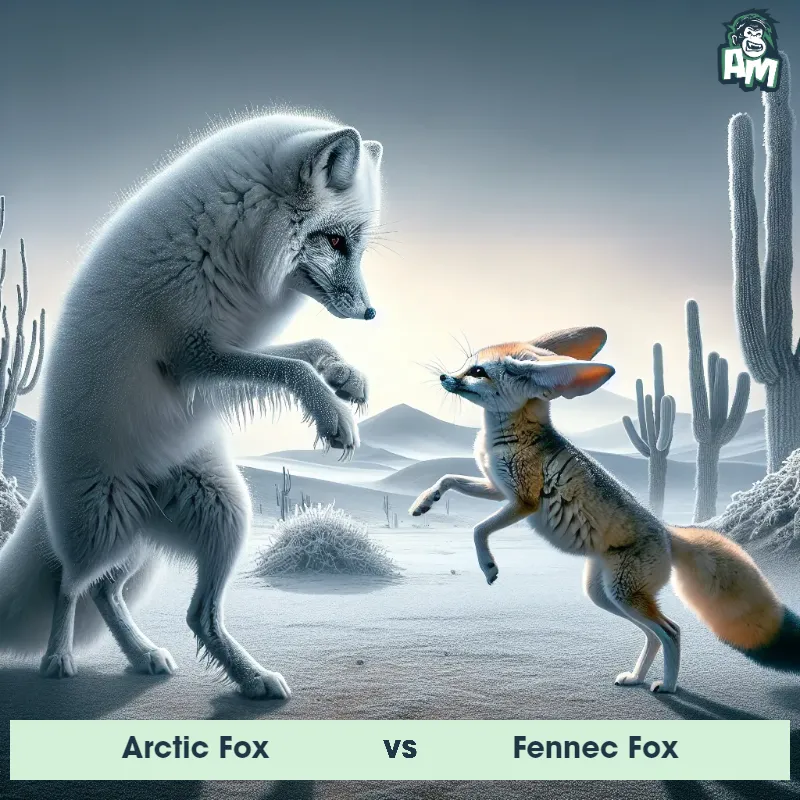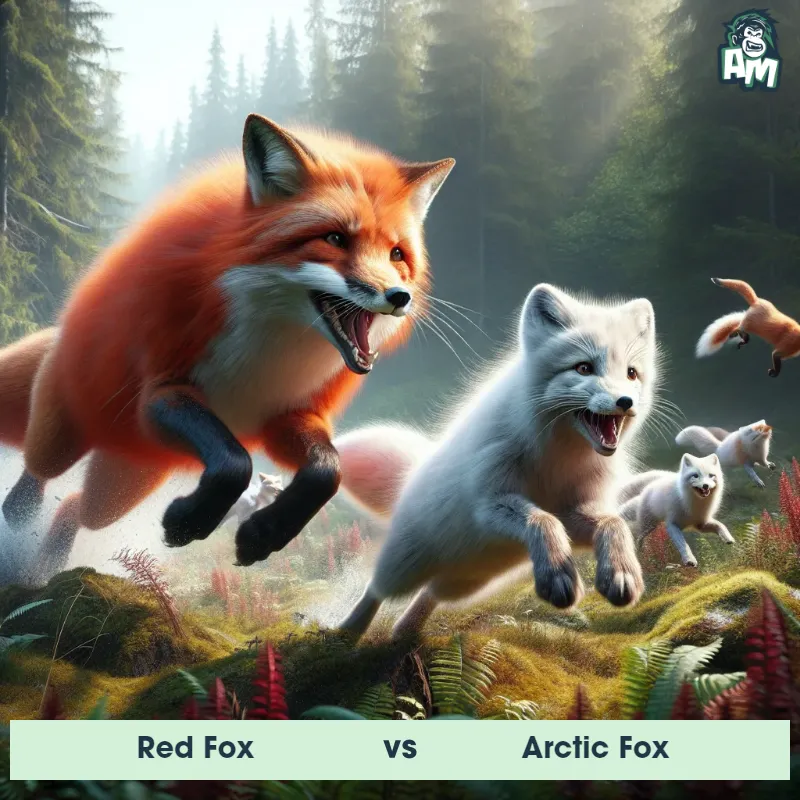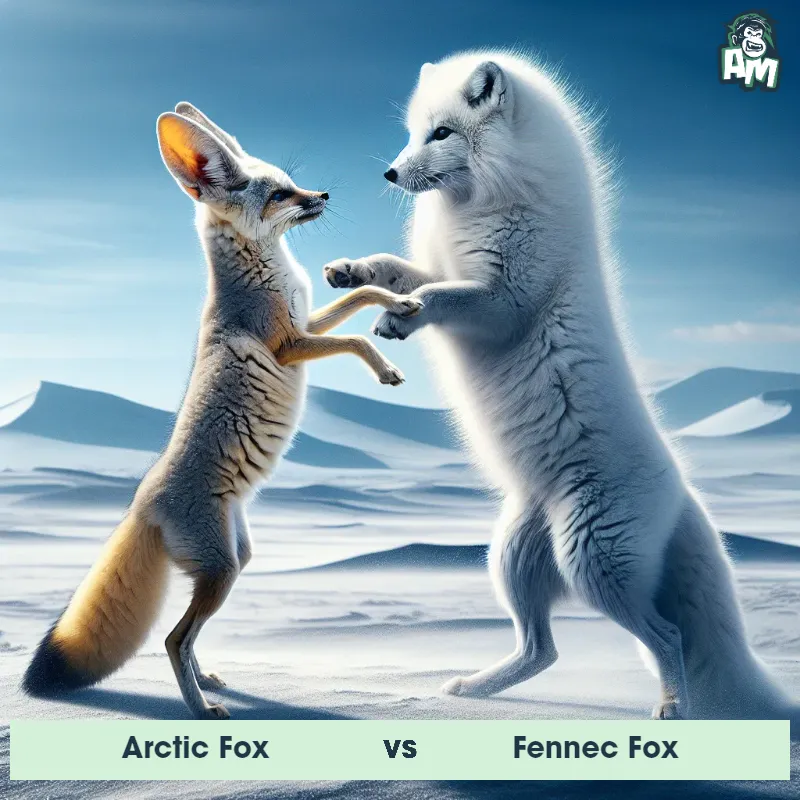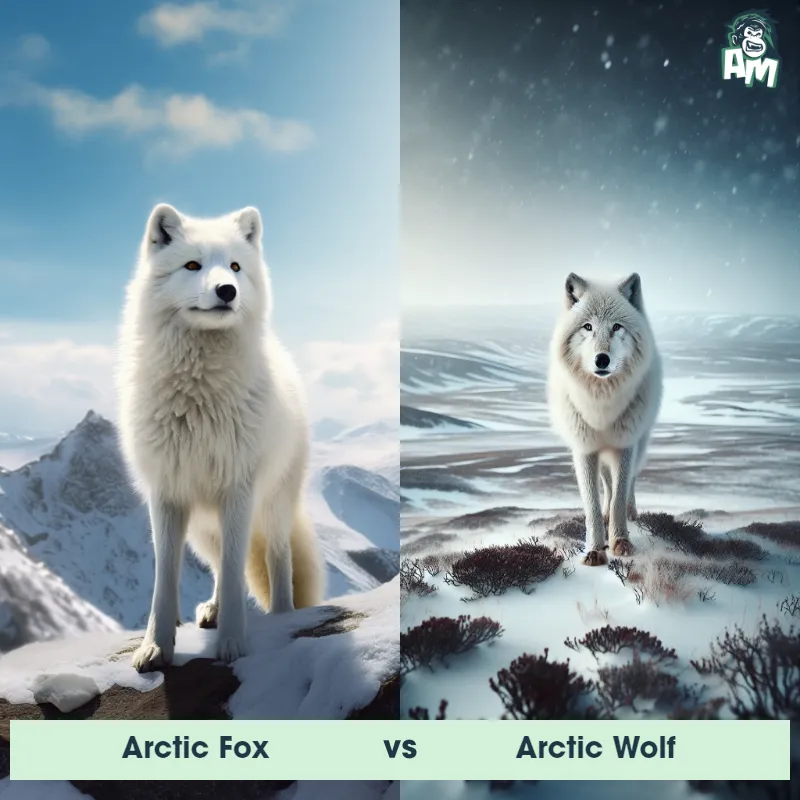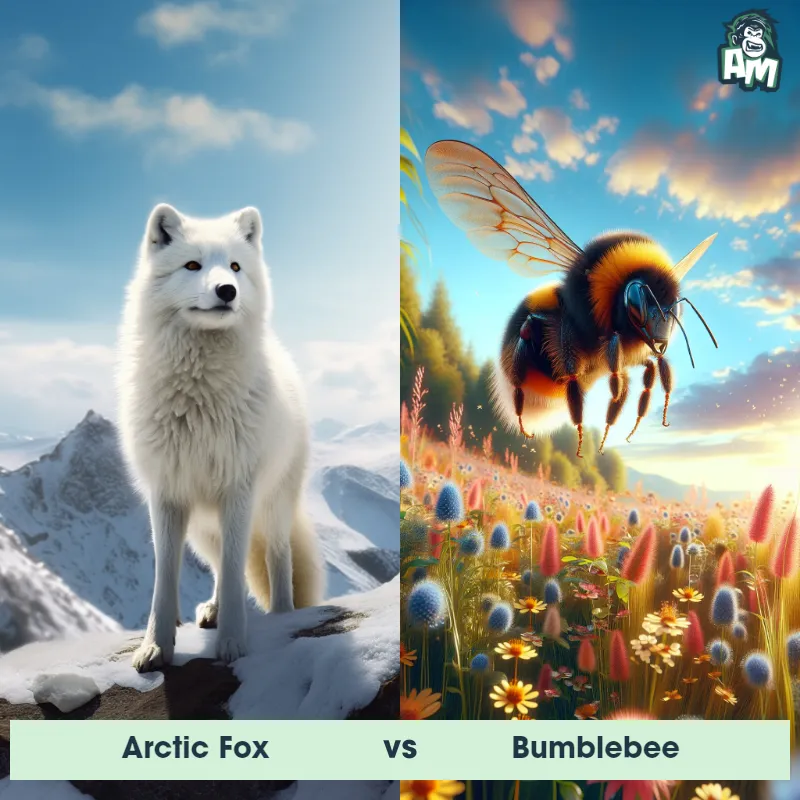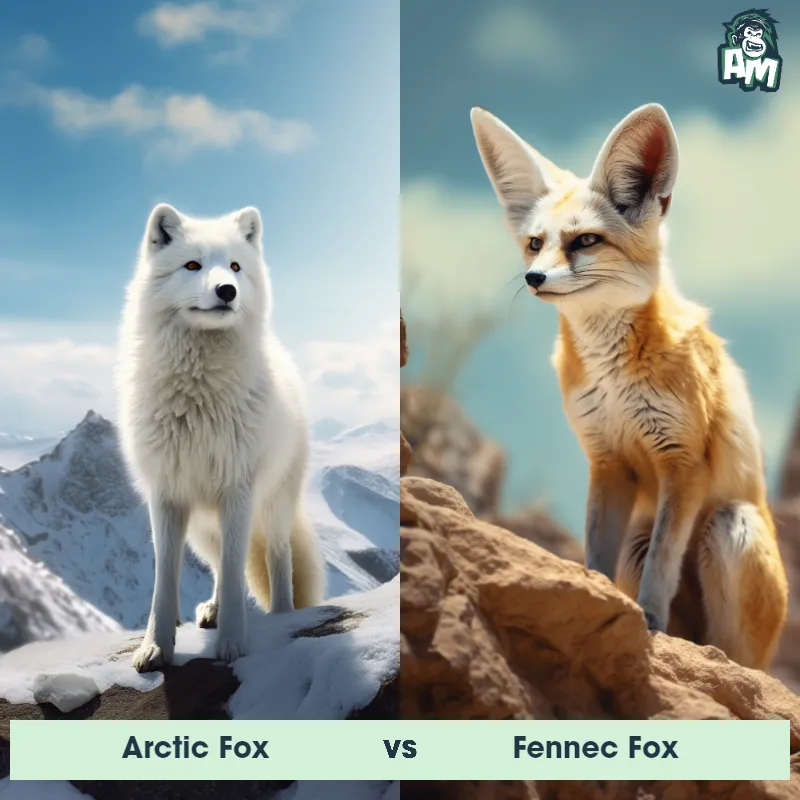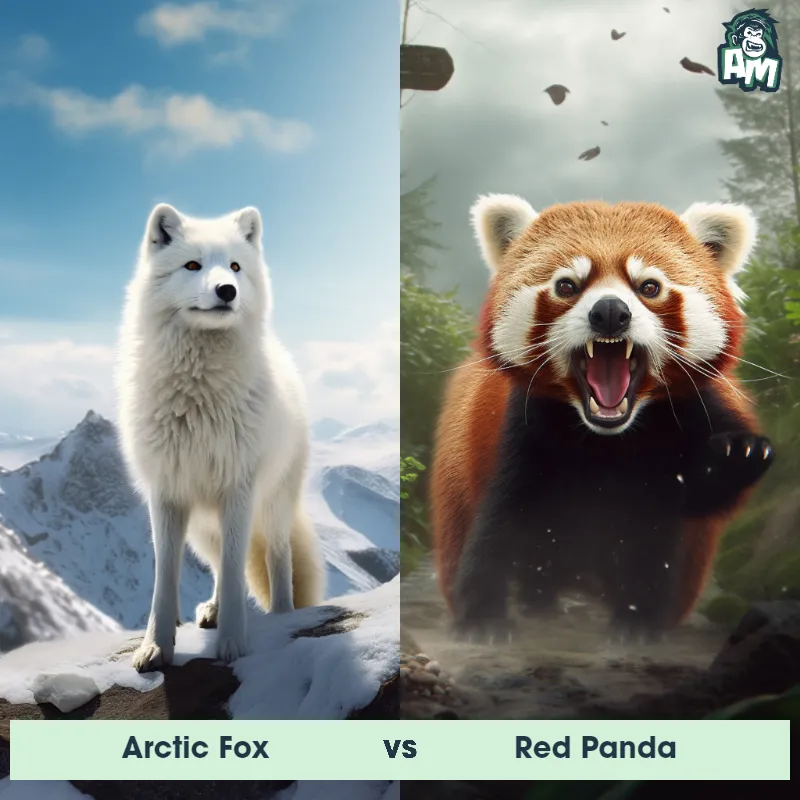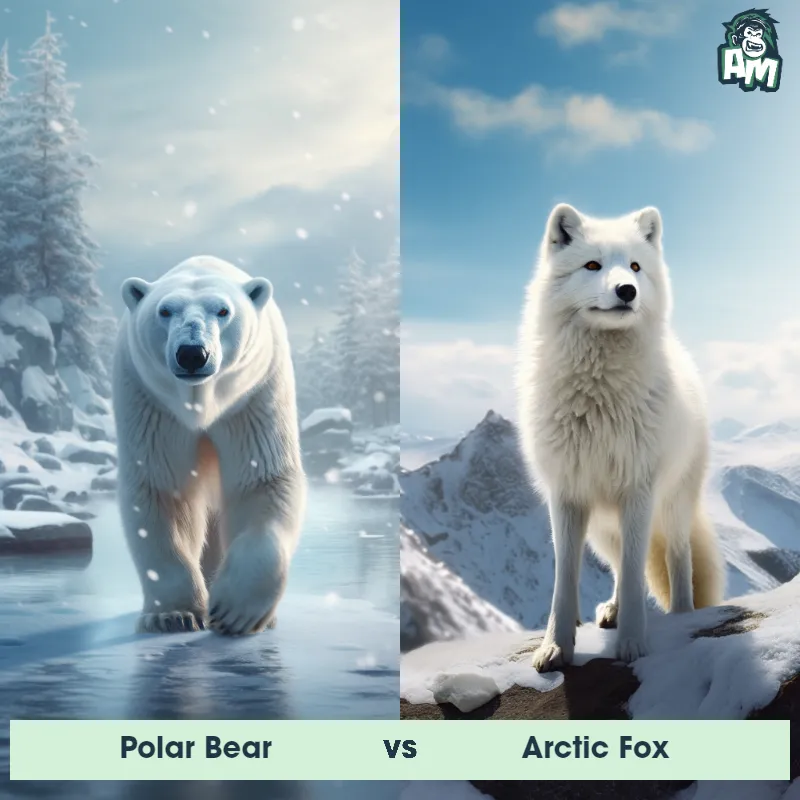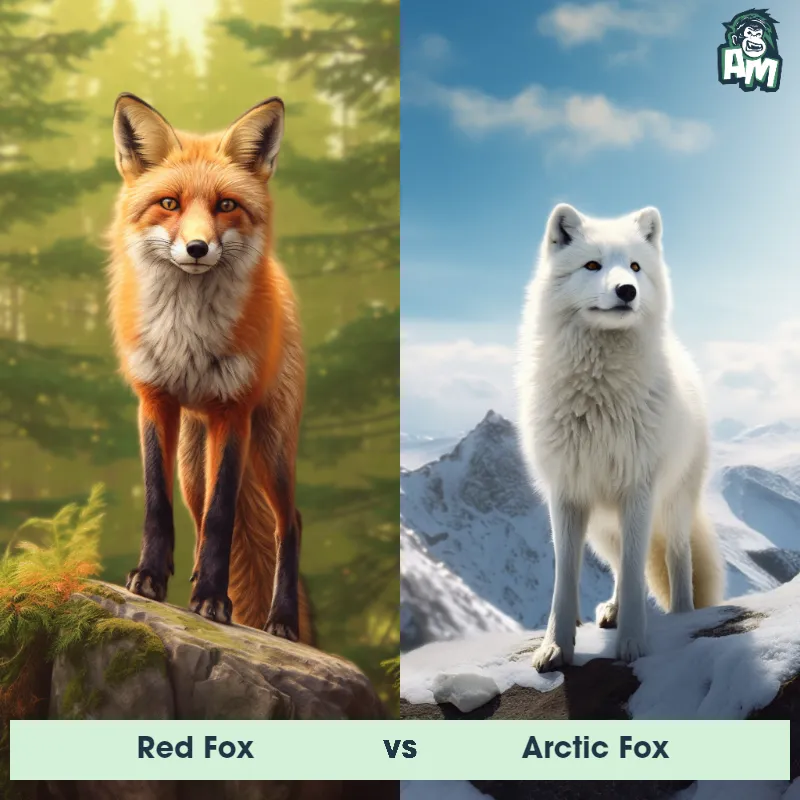The Arctic Fox
The Arctic Fox, also known as the "polar fox," is a small-sized mammal that inhabits the Arctic regions of the Northern Hemisphere. This species is characterized by its unique adaptation to the cold climate, as it possesses a thick, white fur coat that provides excellent insulation in extreme temperatures. The Arctic Fox has a compact body, short legs, and a bushy tail, usually measuring around 12-16 inches in length. Its small, rounded ears help to minimize heat loss, and its fur color changes seasonally, turning brown or gray during summer to blend with the environment.
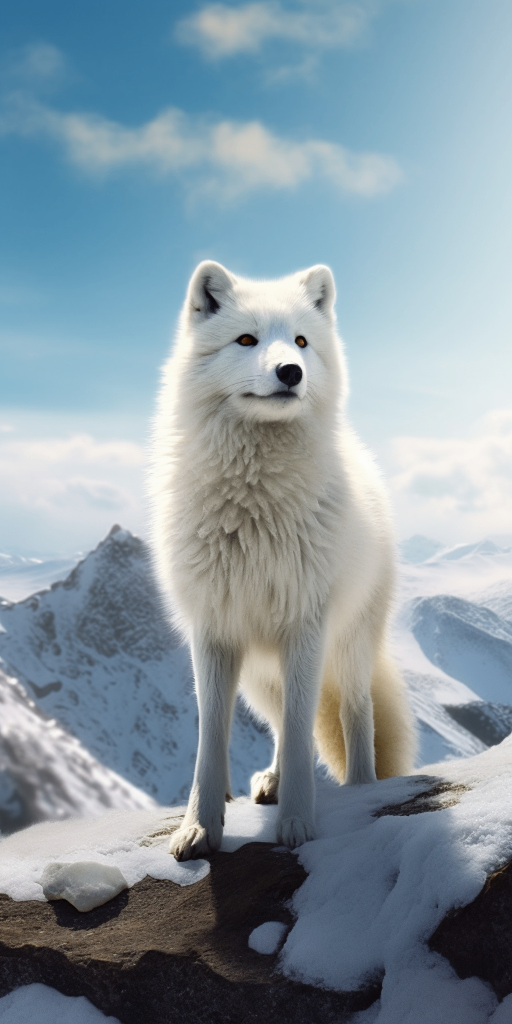
| Arctic Fox | |
|---|---|
| Size | 12-16 inches (30-40 cm) in height, 18-26 inches (45-65 cm) in length |
| Weight | 6.5-21 pounds (3-9.5 kg) |
| Speed | Speed: 25 mph (40 km/hr) |
| Key Strength | Agility and speed |
| Biggest Weakness | Lack of physical strength |
| Scientific Name | Vulpes lagopus |
| Family | Canidae |
| Habitat | Arctic regions of the Northern Hemisphere |
| Geography | Alaska, Canada, Greenland, Russia, Scandinavia |
| Diet | Small mammals, birds, fish, and carrion |
| Lifespan | 3 years - 6 years |

The Arctic Fox
The Arctic Fox, also known as the "polar fox," is a small-sized mammal that inhabits the Arctic regions of the Northern Hemisphere. This species is characterized by its unique adaptation to the cold climate, as it possesses a thick, white fur coat that provides excellent insulation in extreme temperatures. The Arctic Fox has a compact body, short legs, and a bushy tail, usually measuring around 12-16 inches in length. Its small, rounded ears help to minimize heat loss, and its fur color changes seasonally, turning brown or gray during summer to blend with the environment.
Fun Fact: The Arctic Fox has an exceptional ability to locate prey even beneath thick snow cover, using its highly sensitive hearing and accurate sense of smell, allowing it to successfully find and catch small mammals like lemmings, voles, and even birds that hide beneath the snow.
| Arctic Fox | |
|---|---|
| Size | 12-16 inches (30-40 cm) in height, 18-26 inches (45-65 cm) in length |
| Weight | 6.5-21 pounds (3-9.5 kg) |
| Speed | Speed: 25 mph (40 km/hr) |
| Key Strength | Agility and speed |
| Biggest Weakness | Lack of physical strength |
| Scientific Name | Vulpes lagopus |
| Family | Canidae |
| Habitat | Arctic regions of the Northern Hemisphere |
| Geography | Alaska, Canada, Greenland, Russia, Scandinavia |
| Diet | Small mammals, birds, fish, and carrion |
| Lifespan | 3 years - 6 years |
Match Highlights
Arctic Fox Matchups
We use AI to simulate matchups between the Arctic Fox and other animals. Our simulation considers size, strength, and natural predatory behaviors to determine the most likely outcome.
Arctic Fox: Diet, Predators, Aggression, and Defensive Behaviors
What do Arctic Foxes eat?
Arctic Foxes primarily feed on small mammals such as lemmings, voles, and Arctic hares. They also scavenge for carrion, steal prey from larger predators, and eat birds, bird eggs, insects, and berries when available. Their diet varies depending on the season and the availability of prey in their habitat.
Do Arctic Foxes have any predators?
Arctic Foxes have several natural predators, including large carnivores like polar bears, wolves, and wolverines. Birds of prey such as snowy owls and golden eagles also pose a threat to them. Arctic Fox pups are particularly vulnerable to predators, so the parents must be vigilant in protecting their young.
Are Arctic Foxes aggressive?
Arctic Foxes are not known for being aggressive towards humans, but they can display aggressive behavior towards other animals, especially when protecting their territory, food, or young. They may also become aggressive during mating season when competing for a mate.
Do Arctic Foxes fight?
Arctic Foxes are known to engage in fights with each other, especially during the breeding season when competition for mates is high. They use vocalizations, body language, and physical confrontations to establish dominance and resolve conflicts within their social hierarchy.
How do Arctic Foxes defend themselves?
Arctic Foxes have several adaptations that help them defend themselves from predators and rivals. They are skilled at evasion and can run quickly over snow and ice to escape danger. They also use their sharp teeth and agile movements to fend off attackers, and may resort to hiding in underground burrows to avoid confrontations.
What is the biggest weakness of Arctic Foxes in a fight?
The biggest weakness of Arctic Foxes in a fight is their relatively small size and lightweight build compared to larger predators like polar bears and wolves. While they are agile and resourceful, they may struggle to overpower or defend themselves against much larger and stronger opponents when faced with a direct confrontation.
Fun Fact: The Arctic Fox is an incredibly adaptable species, capable of surviving in incredibly harsh conditions of the Arctic tundra, withstanding temperatures as low as -70 degrees Celsius -94 degrees Fahrenheit, making it one of the most cold-tolerant mammals in the world.
Fun Fact: Unlike other types of foxes, the Arctic Fox is able to undergo a color change during winter, from its typical brownish or grayish coat to a pristine white, enabling it to blend seamlessly with the snowy surroundings and remain camouflaged from predators. This color change is known as "seasonal dimorphism."



